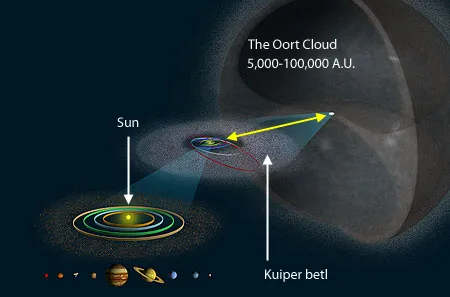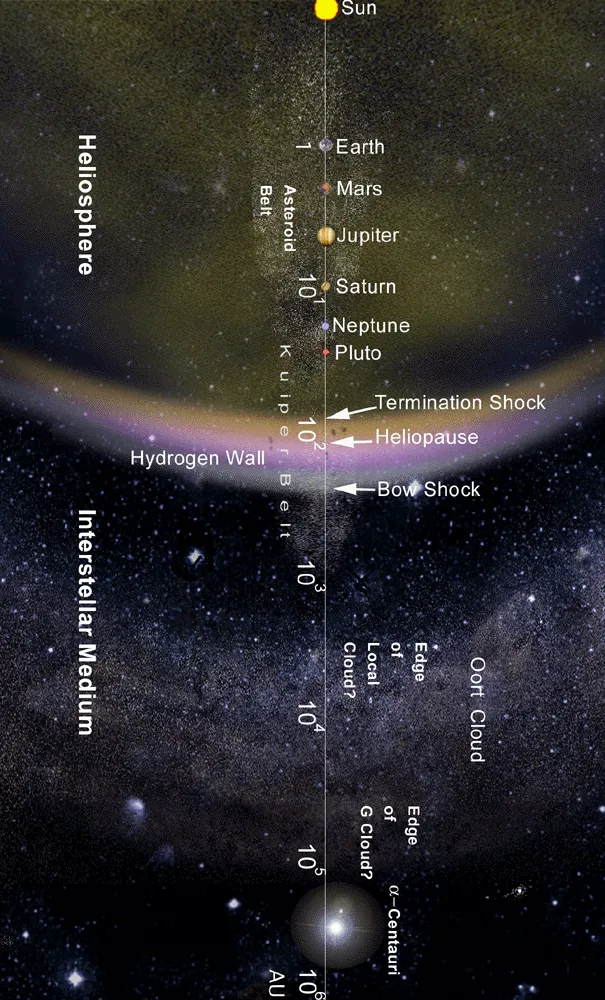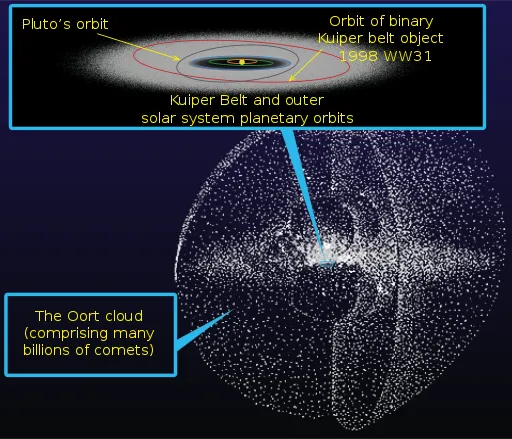
After a few days without being able to post due to occupations in my work, I had some time so I decided to use it to write another post of Astronomy 101, a series that was very well received and had left a little aside, but it's time to take it up again so let's go to it.
For today's Astronomy 101 post, as I suppose you have been able to realize, I am going to talk to you about something that I find extremely interesting: the Oort cloud, a cluster of objects that are very distant but whose gravitational effects affect the entire solar system
So as I always say don't waste more time and let's begin
The Oort cloud
As I briefly mention, the Oort cloud is a massive cluster of objects that lies in the confines of the solar system and was discovered by the astrophysicist Jan Hendrik Oort. This group of objects is composed mainly by pieces of ice rock and other materials that are in space, and in fact, the cumulus is so large that it extends to the entire solar system, that is to say, something almost indescribable how gigantic it is. In addition, it has been determined that the shape of a gigantic belt, something like the shape of a giant crescent.

Wikimedia
CC BYSA 3.0
It should be noted that even when the existence of the Oort cloud has been theorized, it has never been observed despite how big it is, all due to the immense distance it is located.
The existence of this immense group of objects is theorized and based on the fact that Jan Hendrik Oort established that all comets and asteroids must come from somewhere as they all travel from different directions and orbits; so this allowed him to conclude that there must be a large "ring" from which all these objects are detached by the gravitational effects of the Milky Way, and after analyzing the orbits of some comets he also deduced that the shape of this cloud no doubt It must be spherical.
Basically, according to everything I've told you, the Oort cloud is an immense ring that surrounds the solar system and from which eventually come asteroids and comets.
As I have emphasized to you in this post, the Oort cloud consists of countless objects that are mostly frozen rocks composed of different elements and materials, well all the objects that form the Oort cloud are known as OCOs and it is believed that at the beginning of the universe these objects were close to the sun but with the passing of years due to the gravitational effects of the sun and the planets that were forming these rocky objects were being expelled until the point to accumulate and form what is now known as the Oort cloud.
Some facts about the Oort cloud
It has been theorized that all the objects that make up the Oort cloud have been agglomerated at the same time that the universe has evolved, that is why the vast majority of the rocks that compose it have originated in the same way as the other objects that exist in the universe, that is, from the collision of gases and rocky particles, in addition to the own disintegration of other objects; hence, these rocks that make up the Oort cloud also have other components in addition to frozen rocks.
However, all these objects were gradually expelled by the effects of gravitational waves until forming the immense cluster that we "know" today
This tremendous cluster consists mainly of two parts or layers better said:
Inner layer: It is the densest layer of the Oort cloud where the objects of greater spread are found and which is also known as the cloud of Hills, is a kind of half moon of an approximate size of between 2,000 and 20,000 AU.
Outer layer: As you can deduce is the outermost layer where are the smaller objects and those who are more likely to be detached by the gravitational effects of the Milky Way, in addition it has been discovered that it is the final line to where the Sun acts, that is, until this outer layer is as far as the gravitational power of the sun gets. It is estimated that the size of this outer layer goes from 20,000 to 50,000 AU.
Many scientists have the firm belief that the Oort Cloud is so large that it has a size very close to that of the planet Jupiter and that according to some calculations carried out from what is known of Halley's Comet this immense cluster of rocky objects has a mass of approximately 5 times the mass of the earth.
An important fact to note is that despite how far away the Oort cloud is, it is constant victim of the gravitational action of the Milky Way that inflicts on it a tidal force that makes the objects that form this cloud being pushed themselves towards the center of our solar system and that therefore eventually these objects detach themselves from the cloud and fly out towards the sun, hence comets and asteroids.
In summary, the rocks found in the Oort cloud are not affected by the sun's gravity, but they are affected by the gravity of the Milky Way, which causes them to deform its orbit and get out of the cumulus and adopt a trajectory that leads to the sun or the center of the solar system. However, other theories suggest that these deformations in the orbits of the rocks of the Oort cloud occur when relatively close supernovas are generated that cause these objects to come loose from space.


